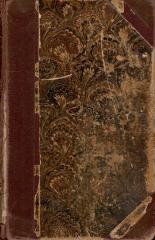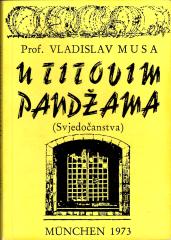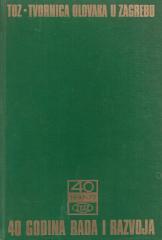
Tumač obćemu austrijskomu gradjanskomu zakoniku I - II
Opći austrijski građanski zakonik, objavljen 1811., nakon čuvenog francuskog Code Civile-a iz 1804. predstavlja drugu značajnu kodifikaciju građanskog prava u Europi. OGZ-a u Hrvatskoj i Slavoniji uveden je 1852., kada je proglašen carski patent br. 246.
Opći građanski zakonik, (Allgemeine Bürgerliche Gesetzbuch), što je stupio na snagu 1. I. 1812. u svim zemljama što su tada pripadale austrijskoj kruni, a u ostalim zemljama monarhije prema danoj kronologiji u prethodnom dijelu ovog rada, bitno je promijenio austrijsko feudalno društvo u cjelini i donio osnove da se to društvo reformira u korijenu. Te promjene nisu nastupile odmah nakon početka primjene OGZ-a, u austrijskim zemljama, ali su svakako nastale poslije revolucionarne 1848., kada su zahtjevi širih slojeva naroda u monarhiji i revolucionarni utjecaji izvan države prisilili političku elitu na potrebne izmjene u političkom i pravnom ustrojstvu. Rečeno je da je OGZ, stupio na snagu u pojedinim dijelovima Istre i Dalmacije, počevši od 1. listopada 1815., pa zaključno s 1. listopadom 1816., u karlovačkom okrugu, 1. siječnja 1820., što je nekad činio Kraljevinu Iliriju, pod francuskom upravom, da bi na kraju bio uveden 20. studenoga 1852., a stupio na snagu u Hrvatskoj i Slavoniji, 1. svibnja 1853., zajedno kada i u Ugarskoj, srbskoj Vojvodini i tamiškom Banatu.
Ipak, OGZ, kao sveopći i jedinstveni građanski zakonik, kratko je vrijeme bio u upotrebi i na snazi u cijeloj monarhiji jer je Ugarska uspjela od središnje vlasti u Beču, građanski zakonik, staviti izvan snage. OGZ je sve do 1. V. 1861., bio na snazi u cijeloj Habsburškoj Monarhiji, a od tog dana kada su u Ugarskoj prestale uredovati carske i kraljevske sudbene oblasti. Tome je prethodila tzv. Listopadska diploma, kojom je bečki dvor vratio pravosudno zakonodavstvo saboru zemalja ugarske krune. Prema toj odluci je rješenjem od 20. I. 1861., bio raspušten madžarski odjel Carsko – kraljevskog vrhovnog suda i Vrhovnog urbarskog suda, pa je ponovno bio organiziran Kraljevski stol sedmorice. Temeljem ovakvog stanja, otvorena je 22. I. 1861., u Pešti konferencija po Judexu Curiae, što je bila sastavljena od septemvira, svih odličnih poznavalaca ugarskog prava i njihova je zadaća bila urediti samostalno ugarsko pravosuđe, što je još odobreno ručnim kraljevskim pismom od 20. X. 1860.
Jedna od temeljnih značajki OGZ-a, je i ta, da je hrvatski pravni poredak preko njega utemeljio svoju vezu s kontinentalnoeuropskim pravnim krugom, njegovom podgrupacijom, što se naziva srednjoeuropskim pravom, a dio je to rimsko – germanske pravne tradicije.68 Već iz ranijeg dijela izlaganja ove teme vidljivo je da je taj zakonik bio neobično važan za cjelokupnu državu, pa su i vladari tražili od radnih grupa poseban pristup izradi osnove zakonika, a prikazali smo da je to bio sličan postupak i u drugim državama što su ranije kodificirale privatno pravo od Austrijske Carevine. Zbog tog svog značaja, kodifikacija privatnog prava je kao svojevrsnu lančanu reakciju, prouzročila čitav niz izmjena i donošenja novih propisa i zakona, što možda i nemaju izravne veze s privatnim pravom, i ne odnose se isključivo na njega, ali ga se posredno i tiču ili dijelom reguliraju odnose i u privatnom pravu, a po svom sadržaju pripadaju javnom pravu.
OGZ je bio na snazi na prostoru što su bili u sastavu Austro-Ugarske Monarhije i u prvoj i drugoj Jugoslaviji sve dok se ti propisi iz privatnog prava nisu nadomjestili domaćim. Zemlje gdje je vrijedio bile su Dalmacija i Istra; Hrvatska i Slavonija; Vojvodina; Slovenija. Vrijedio je i u Lombardiji i Venetu (Veneciji) sve do ujedinjenja Italije, u drugoj polovici XIX. stoljeća. U Republici Austriji i danas je na snazi, noveliran 1914. – 1916.
Knjiga se sastoji od dva toma.
Jedan višetomni primjerak je u ponudi.

- Podvlačeno olovkom

- Oštećen hrbat





